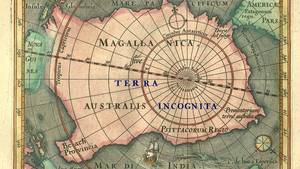Brain is a computational machine that gathers information from sensory organs, integrates them, and provides proper output for motor control. To understand how it works, it is important to obtain a comprehensive knowledge about its organization from input to output. Towards this goal we analyse the whole of a relatively simple brain system rather than focusing on a particular small part of a complex brain. We primarily use the fruit fly Drosophila melanogaster to make the best use of its advanced molecular genetic tools for visualising and manipulating specific cells. With only about 100,000 cells in the entire brain and less than 20,000 neurons per side in its central part, it will not be impossible to understand its entire neuronal network.
If you are a tourist, visiting popular locations such as the Cathedral in Cologne and the Brandenburg Gate in Berlin might be enough to get a certain impression about Germany. But if you are a sociologist who want to make detailed analysis of the country, you will have to investigate not only those tourist spots but also lesser-known cities and towns that lie in between. Many neuroscientists focus on popular spots of the brain such as the cerebral cortex and hippocampus in mammals, or mushroom body and central complex in insects. Although such research is important in its own right, we cannot understand the way information is processed in the brain if we ignore the rest of the neurons and brain regions that lie in between.
The brain regions that have historically escaped from extensive research, which we call “terra incognita” of the brain, account for as much as 70% of the brain volume and neuron numbers. They feature extensive connections with each other as well as with known sensory, integration and motor centres. Having analysed the architecture of the visual, olfactory, gustatory, auditory and somatosensory centres as well as learning/memory systems, we now endeavour to identify neurons and analyse their functions of the terra incognita regions in order to establish a comprehensive view about brain organization and function.
Discover our homepage here.
Methods
– Single-photon and two-photon laser microscopy
– High-resolution multi-channel neuron anatomy imaging
– Live neuron activity imaging with genetically encoded Calcium Indicators
– Specific labeling of thousands of specific neurons/glial cells with gene expression drivers
– Functional manipulation of these neurons with optogenetics and thermogenetics
– Video analysis of motion behavior with conventional and high-speed recording
– Very large collection of expression driver lines
– Molecular genetics to combine diverse genetic tools
– Immunohistochemistry of diverse neuron-related molecules
– Three-dimensional image reconstruction and analysis
– Whole brain connectome analysis with light and electron microscopy data
– Clustering and network analysis
5 selected publications
- Scheffer LK, Xu CS, Januszewski M, Lu Z, Takemura SY, Hayworth KJ, Huang GB, Shinomiya K, Maitlin-Shepard J, Berg S, Clements J, Hubbard PM, Katz WT, Umayam L, Zhao T, Ackerman D, Blakely T, Bogovic J, Dolafi T, Kainmueller D, Kawase T, Khairy KA, Leavitt L, Li PH, Lindsey L, Neubarth N, Olbris DJ, Otsuna H, Trautman ET, Ito M, Bates AS, Goldammer J, Wolff T, Svirskas R, Schlegel P, Neace E, Knecht CJ, Alvarado CX, Bailey DA, Ballinger S, Borycz JA, Canino BS, Cheatham N, Cook M, Dreher M, Duclos O, Eubanks B, Fairbanks K, Finley S, Forknall N, Francis A, Hopkins GP, Joyce EM, Kim S, Kirk NA, Kovalyak J, Lauchie S, Lohff A, Maldonado C, Manley EA, McLin S, Mooney C, Ndama M, Ogundeyi O, Okeoma N, Ordish C, Padilla N, Patrick CM, Paterson T, Phillips EE, Phillips EM, Rampally N, Ribeiro C, Robertson MK, Rymer JT, Ryan SM, Sammons M, Scott AK, Scott AL, Shinomiya A, Smith C, Smith K, Smith NL, Sobeski MA, Suleiman A, Swift J, Takemura S, Talebi I, Tarnogorska D, Tenshaw E, Tokhi T, Walsh JJ, Yang T, Horne JA, Li F, Parekh R, Rivlin PK, Jayaraman V, Costa M, Jefferis GS, Ito K, Saalfeld S, George R, Meinertzhagen I, Rubin GM, Hess HF, Jain V, Plaza SM. (2020) A connectome and analysis of the adult Drosophila central brain. Elife 9:e57443. doi: 10.7554/eLife. 57443.
- Tsubouchi A, Yano T, Yokoyama TK, Murtin C, Otsuna H, Ito K. (2017) Topological and modality-specific representation of somatosensory information in the fly brain. Science 358: 615-623.
- Ito K, Shinomiya K, Ito M, Armstrong D, Boyan G, Hartenstein V, Harzsch S, Heisenberg M, Homberg U, Jenett A, Keshishian H, Restifo L, Rössler W, Simpson J, Strausfeld NJ, Strauss R, Vosshall LB. (2014) The Insect Brain Name Working Group. A systematic nomenclature for the insect brain. Neuron 81: 755-765.
- Flood T, Iguchi S, Gorczyca M, White B, Ito K, Yoshihara M. (2013) A single pair of interneurons commands the Drosophila feeding motor program. Nature 499: 83-87
- Ito M, Masuda N, Shinomiya K, Endo K, Ito K. (2013) Systematic analysis of neural projections reveals clonal composition of the Drosophila brain. Curr Biol 23: 644–655.



